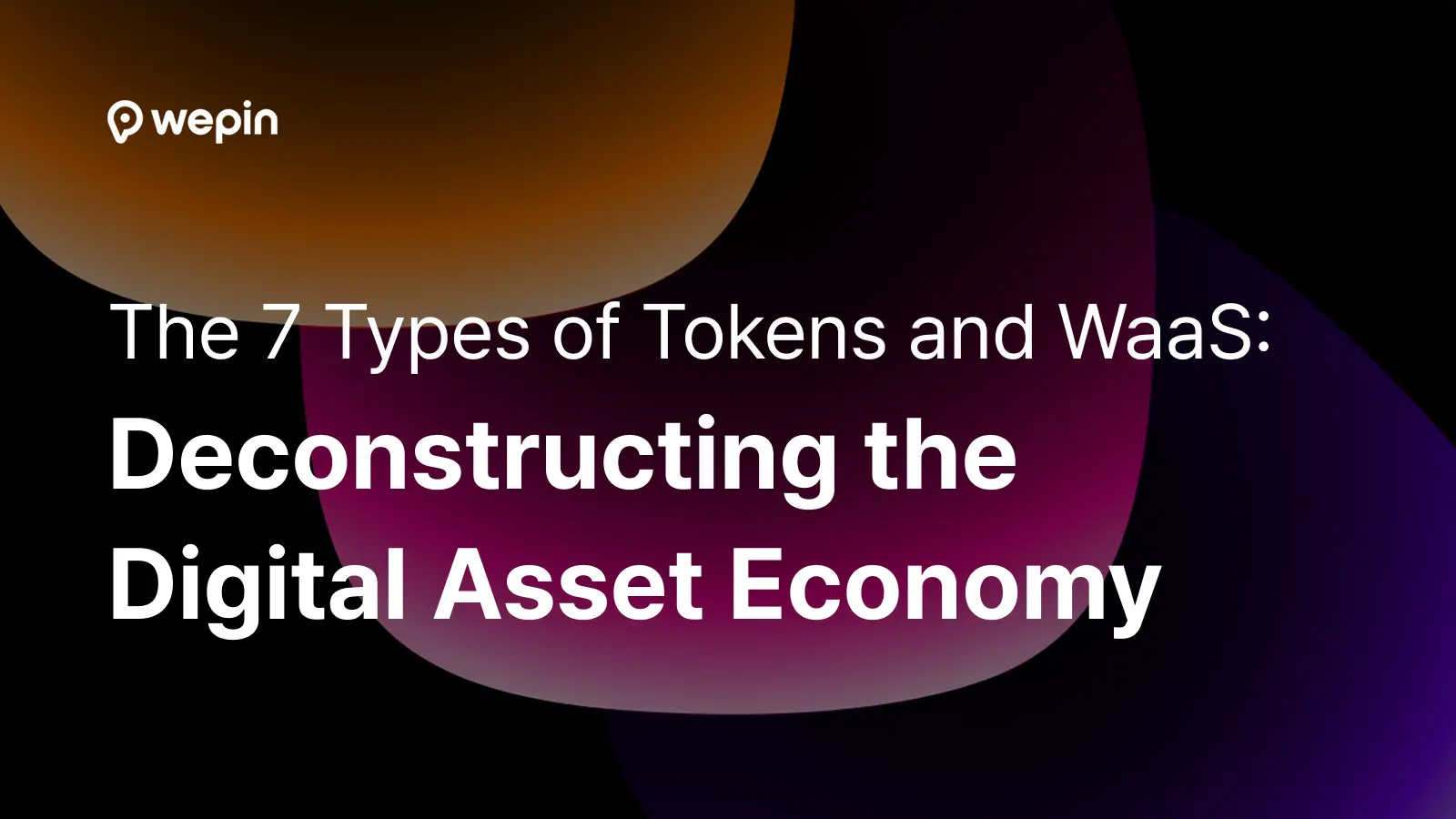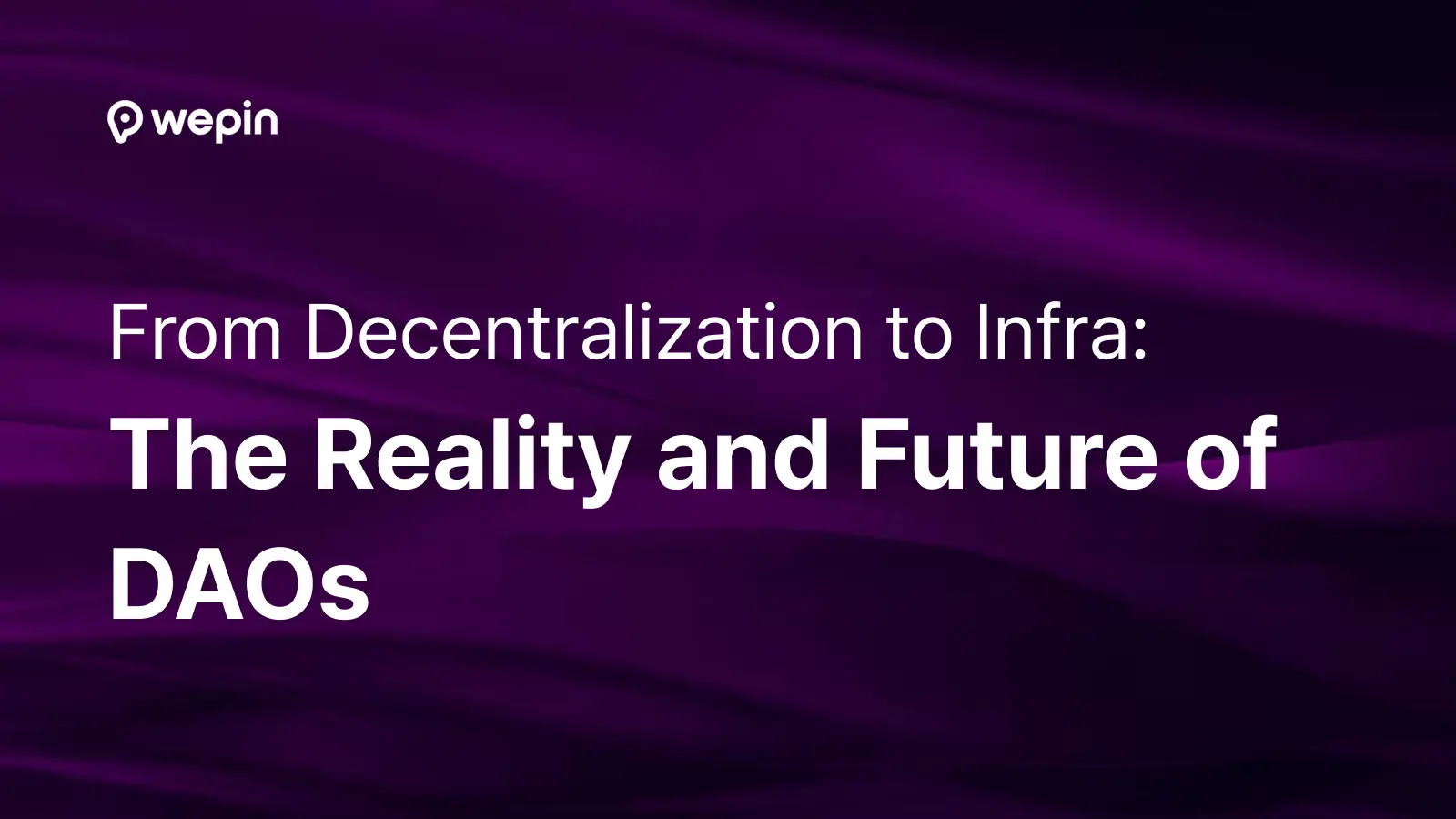Author: Jiyun Kyung, Business Development (https://www.linkedin.com/in/jiyunkyung/)
[TL;DR]
- Seed phrases play a crucial role in the security and asset management of cryptocurrency wallets, but they present inconveniences and entry barriers in terms of user experience.
- The responsibility for safely storing seed phrases falls on the user, and loss can lead to asset loss, making Web3 popularization difficult.
- Wepin wallet, a representative brand of the WaaS model, is contributing to overcoming the limitations of seed phrases and lowering entry barriers to Web3 services through user-friendly authentication methods and professional security management.
- Innovative solutions like WaaS that harmonize self-custody and user convenience are expected to promote the popularization and development of the Web3 ecosystem.
1. Definition and Role of Seed Phrases

A seed phrase is a sequence of 12-24 words generated by cryptocurrency wallets, acting as a master password for user accounts. This seed phrase is used to generate the user's private key, which allows access to all cryptocurrency addresses and digital assets connected to that wallet. Seed phrases have high security because they are formed from a random number generation source, creating keys from randomly generated words by the wallet itself. Seed phrases are often used interchangeably with mnemonic codes.
The main role of seed phrases is to enable wallet recovery and access to digital assets. If users lose or damage their original wallet, they can use the seed phrase to recover the wallet and regain access to their digital assets. This means that seed phrases play a crucial role in securely protecting and managing users' digital assets.
However, due to the powerful role of seed phrases, users must take special care to maintain their security. If a seed phrase is exposed to others, all assets in that wallet can be stolen. Therefore, it is very important to store seed phrases in a safe place and never share them with others.
In summary, seed phrases are a key element in the security and asset management of cryptocurrency wallets, and users must pay special attention to maintaining their security. Safe management of seed phrases is essential for protecting users' digital assets and securing digital asset sovereignty in the Web3 ecosystem.
2. Usage of Seed Phrases and Relationship with Private Keys
Seed phrases are an important element used to generate private keys for cryptocurrency wallets. When first creating a wallet, a seed phrase is generated, and based on this, a Hierarchical Deterministic Wallet (HD Wallet) structure is created.
HD wallets are structures that can generate multiple private and public key pairs from a single seed phrase. This allows users to manage multiple cryptocurrency addresses with a single seed phrase. Seed phrases consist of a series of words, and private keys are generated based on the order and combination of these words. The generated private key is used to sign all transactions for that wallet.
In other words, private keys prove ownership of the wallet and are used to generate digital signatures necessary for sending or receiving digital assets. Private keys form a key pair with public keys, and public keys are mainly used as cryptocurrency receiving addresses.
Therefore, seed phrases are the starting point for private key generation, and the private keys generated through them are used in actual cryptocurrency transactions. While seed phrases are used for wallet recovery and backup, private and public keys are used for everyday transactions and encryption operations.
In short, if a seed phrase is stolen, it directly leads to the theft of the cryptocurrency wallet's private key, essentially handing over your assets and cryptocurrency wallet to someone else. Due to this relationship between seed phrases and private keys, users must take special care to maintain the security of seed phrases.
If a seed phrase is exposed, all private keys associated with that wallet could be at risk. Therefore, users must safely store their seed phrases and take necessary security measures to protect their private keys.
3. Why Seed Phrases Hinder the Transition from Web2 to Web3
While seed phrases are a key element in the security and asset management of cryptocurrency wallets, they also present several inconveniences and entry barriers in terms of user experience.
In the Web2 environment, users are accustomed to simple and intuitive authentication methods such as email and password, social login, etc. These authentication methods are optimized in terms of user experience and allow easy use of services without separate technical knowledge. On the other hand, seed phrases used in Web3 require additional learning and management burden for users.
Firstly, users tend to repeatedly lose seed phrases. Since seed phrases are long sentences consisting of a series of words, it is not easy for users to accurately remember or safely store them. If a seed phrase is lost, wallet recovery becomes impossible, and access to digital assets in that wallet is lost. This causes great anxiety for users and acts as a factor that makes them reluctant to use cryptocurrencies.
Secondly, the responsibility for safely storing seed phrases lies entirely with the user. Users must store seed phrases in a safe place and not share them with others. However, complying with these security precautions can be a significant burden for general users. Especially for users unfamiliar with technology, they may not properly recognize the importance of seed phrases or may not know how to store them safely.
Thirdly, seed phrases can cause fear and anxiety for new users. Users who lack understanding of cryptocurrency and blockchain technology may find it difficult to understand the concept of seed phrases itself, and may feel a great burden on the fact that they could lose assets if they lose their seed phrase. This acts as a factor that makes them avoid using Web3 services or increases concerns about safety.
Also, seed phrases show a big difference from Web2 in terms of user experience. While Web2 services can be used through simple login and intuitive interfaces, in Web3, users have to input seed phrases and deal with complex wallet addresses. This difference in user experience acts as a significant barrier for Web2 users transitioning to Web3.
These inconveniences and entry barriers in the use of seed phrases are one of the main factors hindering the popularization of Web3. However, seed phrases and private keys are very important elements from the perspective of self-custody, an important value of blockchain and Web3. Therefore, rather than completely eliminating seed phrases, a more user-friendly and secure authentication and key management method that can easily use seed phrases is needed.
Through this, general users should be able to easily and conveniently use Web3 services, and participate with peace of mind without worrying about financial loss.
4. WaaS Considering Self-Custody and User Convenience
For the Web3 ecosystem to expand and become mainstream, it's necessary to overcome the limitations of seed phrases and introduce more user-friendly authentication and key management methods. In this context, the WaaS (Wallet as a Service) model has recently been gaining attention. The Wepin wallet, a representative brand of WaaS, can contribute to improving user experience and promoting mass adoption by innovating the existing seed phrase method.
The Wepin wallet is a service model that professionally handles the creation, management, and security of blockchain wallets. Companies can use Wepin to create wallets on behalf of users. Also, users can access wallets through simple authentication procedures without having to directly handle complex seed phrases.
In WaaS, familiar authentication methods like social login, email verification, and biometric authentication can be used. (Wepin currently supports social login) This allows Web2 users to easily use Web3 services. Additionally, since WaaS providers usually have professional security systems in place, users can use the service with relative peace of mind.
The Wepin wallet also offers great advantages to developers. Developers can easily implement wallet-related functions through Wepin and reduce the burden of security and key management. This helps save time and costs in developing Web3 services and allows developers to focus on implementing core functions.
WaaS is expected to establish itself as a key infrastructure for the popularization of the Web3 ecosystem, including innovation in seed phrases. Through user-friendly authentication methods, professional security management, and developer support, the Wepin wallet can contribute to lowering entry barriers to Web3 services and improving user experience.
5. Conclusion: The Need for Authentication and Key Management Methods Suitable for the Web3 Era
One of the core values of Web3 is emphasizing individual ownership and control of assets. Under the principles of decentralization and self-sovereignty, users should be able to directly manage and control their digital assets. In this context, the concept of self-custody is becoming increasingly important.
Self-custody means that users directly store and manage their digital assets. This is in contrast to entrusting assets to centralized exchanges or service providers. In a self-custody environment, users directly manage their private keys, giving them complete control over their digital assets.
The biggest advantage of self-custody is security. Centralized exchanges or services can be exposed to risks such as hacking or insider attacks. In fact, there have been several large-scale hacking incidents in the past, resulting in user asset losses. In contrast, in a self-custody environment, users can safely protect their assets from external attacks because they directly manage their private keys.
Also, self-custody ensures sovereignty over users' assets. When entrusting assets to a centralized service, users must follow the policies and decisions of that service provider. In contrast, in a self-custody environment, users can freely manage and use their assets. This aligns with Web3's principles of decentralization and self-sovereignty, contributing to guaranteeing users' rights and freedoms.
However, self-custody also imposes greater responsibility on users. If private keys are lost or hacked, users can permanently lose their assets. Therefore, users need to pay special attention to the safe storage and management of private keys. This can be a significant burden for users unfamiliar with technology.
In this situation, services like WaaS can be an alternative that harmonizes the advantages of self-custody with user convenience. WaaS providers can safely manage private keys together with users while giving users control over their assets. This allows users to reduce the burden of asset management while maintaining sovereignty over their assets.
Self-custody is a core value of the Web3 ecosystem and an important means of protecting user assets. However, to realize this, innovative solutions that consider both user convenience and security are needed. Services like WaaS are expected to contribute to solving these challenges and promote the development and popularization of the Web3 ecosystem.











